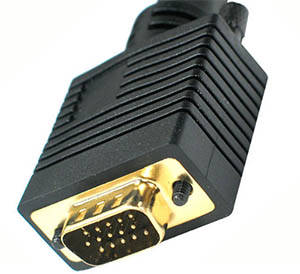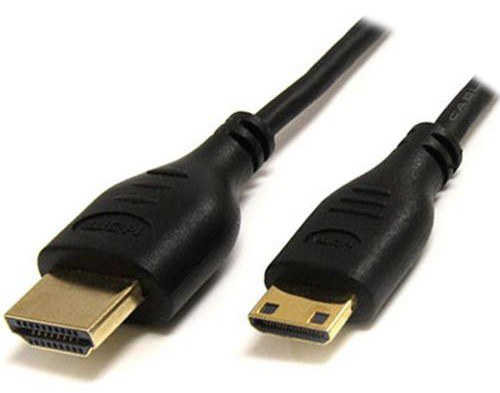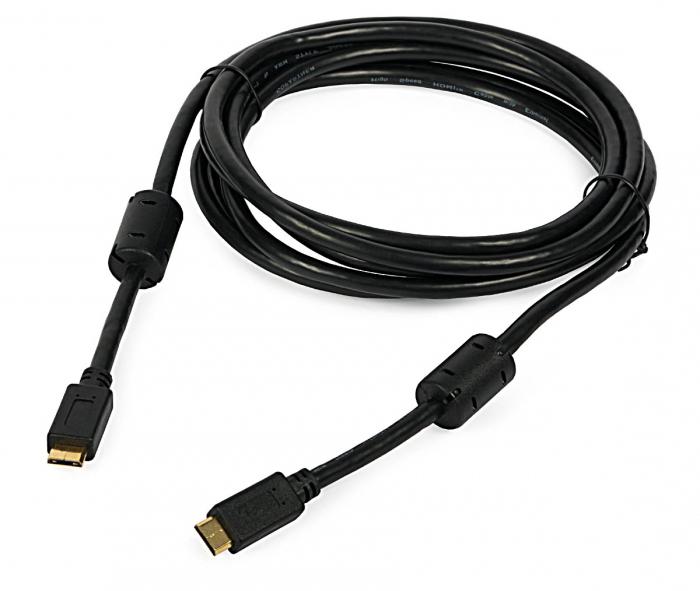HDMI connector socket on cable. Mini HDMI: description, interface purpose
The main video connectors are not entirely suitable for connecting to a TV. These are the well-known video signal connectors Scart, Video and S-Video. The most problems will arise if your TV screen is large sizes. The picture in this case will not be clear, similar to the image of a TV signal. In other words, the image will be slightly, and on large screens, noticeably blurry. This is especially noticeable on text files. You must be at least 1.5 m away from such screens.
Therefore, it is advisable to connect the computer to the TV via a DVI or HDMI connector.
What do we need to know if we have a connection via DVI, HDMI connector
For example, we connected only a TV to the PC, without . In this case, as soon as we launch, we will see our desktop on the screen. True, if the resolution of your TV is 1280 by 720 or 1920 by 1080 pixels. If the screen size of your TV is different, for example 1400 by 900 pixels, then it may not light up.
But not everything is so bad, the video card in this case can still be configured. In this case we will do additional connection to a computer using VGA or DVI connectors. The TV will provide a picture, thanks to which we will configure the required resolution using the video card driver.
Connection via DVI, HDMI connector
This connector was designed to connect a PC specifically to a monitor, so it does not transmit audio signals. But at the moment there are already video cards that allow you to add sound using this connection. These include some of the AMD Radeon HD video cards. The package of such video cards includes a DVI adapter and an HDMI connector. In this case, not only the image will be transmitted, but also the sound.
If you have a different video card, you can take an adapter that connects the DVI connector to the HDMI input of your TV. In this case, the sound will be transmitted using a separate cable. This connection may have one drawback, sound signal may differ slightly from the picture in time. There is a special tool to solve this problem. programs like Reclock.
The DVI output must be HDCP protected. It is in this case that we will get high quality Blu-ray and parts of other discs. Some TVs refuse to work without this protection. Whether this protection exists can be found in the device instructions or using special information. programs such as CyberLink BD/HD Advisor.
When using a VGA connector, it is advisable to know

An incorrect 16/9 aspect ratio image may appear with this terminal. The picture may appear squashed and black margins may appear on the sides of the screen. In this case, you need to look at the settings on your TV, or use special settings. utility included in the video driver. Using these two methods, the picture on the TV can either be stretched or compressed.
Some TVs with this socket will not show their maximum resolution. They may not tell the PC their high resolution. In this case, you will have to delve into the PC image settings or buy a good one that is configured for any resolution.
Optimal sound via HDMI connector
With this connection, the sound will be as normal as your speakers can afford. If you want surround sound, you'll need to use a home theater that you connect to your PC via HDMI. Another HDMI connector on the home theater will transmit information to the TV.
If it is not possible to connect via HDMI, audio must be transmitted using a separate digital cable.
I hope this article will help you optimally configure the connection to your computer via DVI, HDMI connector. Article to be continued in the next issue!
Folk wisdom
Today there are practically no devices that do not have a special HDMI connector. This cable is in great demand due to the ever-growing market for various televisions and other video equipment, which allows the owner to view images in digital format (with high resolution and color depth). As for the mini HDMI cable itself, it is a connector and cable several times smaller than a standard cable that meets modern miniaturization requirements.
At its core, the difference between a regular HDMI and mini HDMI cable and connector lies directly in the size. The mini HDMI version, whose official name is HDMI Type D, has dimensions of 6.4 x 2.8 mm, and Type A, in turn, has dimensions of 13.9 x 4.45 mm. As for the functionality and performance of the mini HDMI cable, it is absolutely no different from the original cable. The smaller copy has the same 19 pins. Thus, it turns out that depending on the size of the cable, the quality of the image supplied using this cable does not change at all, and even more so, does not become worse.
Application area of mini HDMI
Most often, the mini HDMI cable and connector are used for various mobile devices, the dimensions of which simply do not allow the installation of a standard connector (especially on such devices it will not be appropriate). It can be used for: mobile phones, tablets, laptops, a variety of video players, camcorders and cameras. It is worth noting that some modern devices display devices (for example, video cards) also have a mini HDMI connector. This is primarily due to the fact that there is not enough space on the back panel of video cards for a standard HDMI connector, since the standard uses 2 universal DVI-I outputs. That is why a smaller copy of the digital cable is used. Functionality and image quality in this case come second.
Mini HDMI as well as standard hdmi cable consists of the following elements: an outer sheath, which provides protection to the wires inside, a shielding sheath, a screen made of aluminum foil, which protects the cable from various electromagnetic influences, a polypropylene sheath, and inside there are shielded twisted pairs fifth category, unshielded twisted pairs, as well as separate conductors for supplying power and various signals.
- The connector is designed to transmit high-quality video and audio information with a built-in copy protection protocol. Version 1.3 of this connector is characterized by an increase in this interface due to an increased clock frequency (340 MHz).
Description of technology
The mini HDMI type means that this connector is smaller than the standard one. This is due modern requirements miniaturization process. The standard connector of this interface (type A) has dimensions 13.9x4.45mm, and the “mini” version (type D) - 6.4x2.8. So the difference is quite significant. This technology Constantly evolving, today there are four versions of the mentioned connector, each using the same hardware specification and cable. The difference is the increase bandwidth and the type of information transmitted through the connector.
Application
from the point of view of throughput and functional capabilities, it is no different from the usual and ordinary type A connector. That is, it contains the same 19 contacts. The main area of use of such an interface is portable devices, such as Cell phones, tablets, laptops, video players and video cameras, as well as many other similar equipment. Fashion trend the use of such a connector in video cards becomes personal computer, since the space on the back panel is quite limited. And since modern video adapters often support two universal standard DVI-I outputs, for HDMI interface type A there is simply no room. That's why it was decided to use a smaller version of the connector.
Mini HDMI cable
You should know that the length of such a wire should not exceed 15 meters. Types of connectors (types A and D), provided they are of high quality, do not in any way affect maximum length cord. Before you start choosing such a cable, you need to clearly determine what length is needed. To do this, you need to understand in what places the connected components will be installed. If you cannot invest in the 15 meters specified by the standard, then you will need to use several wires. However, in this case you will have to purchase additional ones. In addition, when choosing a cord whose length exceeds two meters, you need to make sure that it has additional shielding, since without this option the cable will not be able to provide high-quality 
Mini HDMI format support
This interface is capable of supporting all major types of video formats, including NTSC, PAL, ATSC. The resolution of the transmitted image is in progressive format 1440p, or 2560x1440. In addition, the Blu-ray and HD-DVD standard is capable of transmitting a maximum of 1080p. mini interface HDMI supports up to 48 bits, which is over 280 trillion. colors, the refresh rate is 120 Hz. In addition, video technology is capable of supporting the following audio formats:
- compressed (DTS, Dolby Digital and others);
- multichannel (DVD Audio, SACD);
- uncompressed audio (PCM): supports up to eight channels with a sampling rate of 192 kHz at 24 bits;
- compressed audio while maintaining quality (Dolby TrueHD, DTS-HD MasterAudio).




